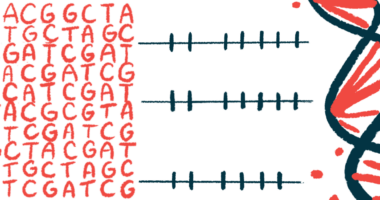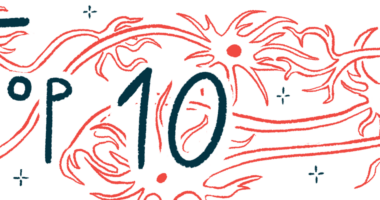Genetic engineering eases motor symptoms in SMA mice
Modifications restore protein, improve nerve-muscle communication

Modifications that help certain genetic information travel to specific parts of nerve cells can ease motor symptoms and help normalize communication between nerves and muscles in a mouse model of spinal muscular atrophy (SMA), a study reported.
SMA disrupts this nerve-muscle communication, which occurs at sites called neuromuscular junctions (NMJs). The research team found that SMA prevented the transportation of the genetic template for a protein called Munc13-1. In SMA neurons, the Munc13-1 template couldn’t travel to the presynaptic area, or the part of nerve cells responsible for sending chemical signals to muscles.
However, with genetic engineering, the researchers were able to restore the protein, improve NMJ function and motor function, and prolong survival.
“Our results identify Munc13-1 as a modifier in SMA that can counteract NMJ dysfunction and highlight the role of Munc13-1 local [production] for presynaptic function in spinal [motor nerve cells],” the team wrote.
The study, “Munc13-1 restoration mitigates presynaptic pathology in spinal muscular atrophy,” was published in Nature Communications.
Nerve-muscle communication
Mutations in the SMN1 gene, which contains instructions for cells to produce the SMN protein, are the chief cause of SMA. SMN is important for supporting specialized nerve cells called motor neurons, which control movement. Without enough functional SMN, motor neurons gradually sicken and die, leading to muscle weakness and other SMA symptoms.
Current SMA treatments typically involve increasing levels of functional SMN. This may prevent the disease from progressing if it is administered early. “However, patients who miss the therapeutic window benefit less from such SMN-repletion therapies,” the researchers wrote. Because of this, there is interest in developing alternative therapies that help restore lost nerve-muscle communication for these individuals.
NMJs are where motor neurons in the spinal cord transmit signals to nearby muscles to enable movement. Scientists know that SMA can cause defects in NMJs, but don’t entirely understand how this occurs.
The team investigated the molecular underpinnings of NMJ disruptions in SMA cells. They compared spinal cord motor neurons from SMA model mice and control animals, measuring levels of the genetic template cells use to produce Munc13-1, a protein crucial for nerve-muscle communication.
The presynaptic areas of SMA motor cells had lower levels of this Munc13-1 template, called messenger RNA (mRNA), than control cells. Experiments revealed that Munc13-1 mRNA stayed in the body of the SMA cells rather than traveling to the presynaptic area. This suggests that SMN plays an important role in transporting the template to the correct part of the cell.
Without sufficient Munc13-1 mRNA, this area of the cell couldn’t perform translation, the process of producing a protein from mRNA. Similar patterns of low mRNA levels and decreased local translation occurred in the presynaptic area of motor neurons derived from SMA patients.
Next, the team demonstrated that local Munc13-1 protein production in the presynaptic area was essential for correct NMJ function. When healthy motor neurons were stimulated, local Munc13-1 translation in the presynaptic area increased and the protein formed clusters. Based on the structure of these clusters, the researchers hypothesized that they were part of the machinery that allowed neurons to release signaling chemicals onto muscles. The clusters didn’t successfully form in cells lacking the SMN protein.
The results suggested that enabling the Munc13-1 mRNA to travel to the presynaptic area might help restore NMJ function in the SMA cells. Using genetic engineering, the team altered a specific portion of the Munc13-1 mRNA. This alteration was designed to allow proteins other than SMN to move the mRNA.
This modification successfully “rescues Munc13-1 mRNA transport in SMA motoneurons,” the researchers wrote. Correspondingly, they said, “restoration of Munc13-1 levels leads to functional synaptic recovery in cultured SMA motoneurons.” The team was able to replicate this finding in SMA patient-derived motor neurons.
To assess what this restoration meant for living animals, the team bred a group of SMA model mice with the Munc13-1 mRNA genetic alteration. These mice tended to have less NMJ dysfunction, milder motor symptoms, and longer survival.
“This mRNA editing thus indicates that therapies aimed at mitigating neuromuscular pathology [disease] in SMA may need to focus not only on increasing Munc13-1 protein levels but also on correcting mRNA transport and local translation processes to fully rescue synaptic functions,” the researchers concluded.








